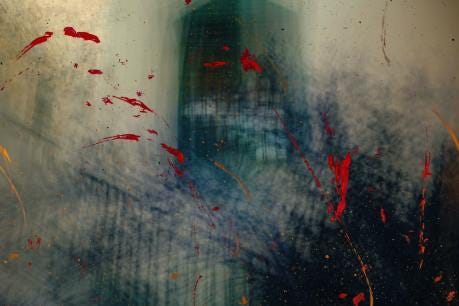CDWC #12 - Self-regulation (Part 2): Meeting Inspiration Half-way
Between grinding and inspiration comes the flow
In the first part of this series, we started considering how to treat writing as craft and not as a mysterious and inspired gift. Because the sad truth is that inspiration is fickle. And while being in a flow state feels great, moments of inspiration are not reliable, nor are they sustainable no matter how much we might wish that they were. What arrives from the unconscious depths of our being often leaves just as dramatically and unexpectedly.
Getting inspiration and craft to play together well is hard! So, when we’re coaching clients, we work with each client to create conditions where they as writers can meet inspiration half-way.
But what does this mean in practice?
It means that we need to get clear on two things. First, we need a working understanding of inspiration. Second, we need to understand what we mean when we use metaphorical language to talk about moving towards inspiration.
Inspiration is an unconscious tendency to make connections that we tend to experience as ideas or feelings erupting into consciousness—as stuff that feels like it comes to us. It comes from the facts that we are patten-finding creatures at all levels. The state of “being inspired” is usually energetic, clear, and flow-like. By contrast, craft is a matter of habits and routines and it requires having a variety of tools in our writing toolboxes. Just like inspiration, craft is also largely unconscious, since it's a sedimented pattern of habits of attention, language, motivation, and so on. Good craft ideally allows inspiration ways in and keeps its fires stoked for longer than would otherwise be the case.

So, what is it to meet inspiration? It is to get in the headspace to encourage it, stoke it, nurture it. This is a tricky task since too much effort deadens inspiration and not enough effort lets it slip away. In our metaphor, meeting inspiration all the way is to over-effort the process. And to meet inspiration less than half-way is to under-effort the process. Too much effort feels forced; too little effort leads to disorganization; inspiration doesn't like either of those extremes.
Practically speaking, meeting inspiration half-way means making space in which you work patiently and persistently for inspiration to arise, but in that space you are able to work even if inspiration doesn't arise. Many writers, regardless of genre, place great value on regular blocks of uninterrupted writing time. This insistence is opposite to the social image of writers as unpredictable or bohemian, but it is the root from which so much grows. During this time, writers try to find that union of craft and inspiration.
What happens inside that space is quite varied. Some writers like to start with some sort of ritual to get into the appropriate headspace. Some writers work hard to break down big tasks into very, very small ones. Some writers split the time into writing and editing or research blocks, since the two usually call on different skill-sets. Some writers find ways of procrastinating that still keeps them in the space. We are sure that at least some writers do very silly things during their hard-earned writing time!
There is much more to say here, so stay tuned as we develop this series, but for now, we can say that meeting inspiration half-way is hard because inspiration is nebulous. The best way to ferret out inspiration is to give yourself protected, uninterrupted time to experiment with finding the right balance of effort and ease, of craft and inspiration. What you do during that time demands experimentation and creativity, since people's brains work differently. What do you think you would do if you had (let's say) two hours every day to try to write?




